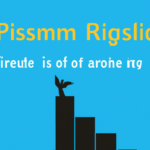Populist movements have emerged across the globe in recent years, showcasing a variety of ideologies and strategies. One example is the Five Star Movement in Italy, founded by comedian Beppe Grillo in 2009. With its anti-establishment rhetoric and promise to give power back to the people, the movement gained significant support, ultimately winning seats in the Italian Parliament. Another example is Podemos in Spain, which started as a grassroots movement in response to the country’s economic crisis. Led by Pablo Iglesias, Podemos aimed to challenge traditional political structures and advocate for social justice. These populist movements serve as a reminder of the growing discontent and desire for change from the mainstream politics.
Table of Contents
- Contemporary populist movements
- Examples of historical populist movements
- Impact of populist movements on society
- Key characteristics of populist movements
- Origins of populism
(The Populist Movement Explained)
Examples of populist movements can be found throughout history. One such example is the People’s Party in the United States during the late 19th century. The People’s Party, also known as the Populist Party, was formed to advocate for the rights and interests of farmers and laborers who felt disenfranchised by the growing power of corporations and the elite.
The movement gained momentum in the 1890s, with charismatic leaders like William Jennings Bryan championing the cause of “the people against the elites.” They called for economic reforms, such as the free coinage of silver, to combat the perceived injustices of the gold standard.
Another example of a populist movement is the Peronist movement in Argentina. Led by Juan Domingo Peron, the movement emerged in the 1940s and 1950s and was rooted in the working class. Peron and his wife Eva Peron, also known as Evita, championed social justice, workers’ rights, and nationalism.
The movement created a cult of personality around the Peronist leaders, with massive rallies and passionate speeches that resonated with the masses. However, the movement also faced criticism for its authoritarian tendencies and disregard for democratic institutions.
In more recent times, the rise of political figures like Donald Trump in the United States, Marine Le Pen in France, and Jair Bolsonaro in Brazil can also be seen as examples of populist movements. These leaders tapped into the frustrations and grievances of their supporters, promising to shake up the establishment and tackle perceived issues such as immigration, economic inequality, and globalization.
Populist movements, although diverse in their ideologies and goals, all share a common thread of mobilizing support from ordinary people who feel left behind by traditional political systems. They often rely on strong leaders and emotional appeals, but their impact and long-term success can vary greatly.
Contemporary populist movements
Contemporary populist movements are on the rise, with numerous examples around the globe. These movements are characterized by their appeal to the concerns and frustrations of ordinary citizens, often targeting established political elites and institutions. They claim to champion the interests of the common people, promising to bring about significant changes and challenge the status quo.
One prominent example of a contemporary populist movement is seen in the United States with the rise of Donald Trump. With his “America First” slogan, Trump tapped into the frustrations of many Americans who felt left behind by globalization and the political establishment. He conveyed himself as an outsider, promising to prioritize the interests of ordinary citizens over powerful elites.
In Europe, populist movements have gained traction in countries like Italy, Hungary, and Poland. These movements have capitalized on concerns over mass immigration, nationalism, and economic grievances. Leaders like Matteo Salvini in Italy and Viktor Orbán in Hungary have successfully tapped into these concerns, promising to protect national values and restore sovereignty.
Latin America also hosts its fair share of populist movements, with leaders like Hugo Chávez in Venezuela and Evo Morales in Bolivia. These leaders mobilized the masses by championing the cause of the poor and marginalized. They tapped into deep-rooted frustrations with corruption and inequality, promising to bring about social justice and redistributive policies.
Populist movements often employ charismatic leaders who are skilled at connecting with the emotions and fears of their followers. They use simple and emotionally charged language, often disregarding political correctness to generate a sense of authenticity and directness. However, critics argue that populist movements can be divisive, scapegoating certain groups and undermining democratic institutions.
It is important to note that not all populist movements are the same, and they can vary significantly in ideology and policy proposals. Some advocate for more inclusive and progressive agendas, while others promote more conservative and nationalist ideas. Nonetheless, these movements share a common thread of challenging the established political order and promising change.
In conclusion, contemporary populist movements are a global phenomenon, with examples seen in different regions like the United States, Europe, and Latin America. These movements tap into the frustrations and concerns of ordinary citizens, promising to challenge the established elites and bring about significant changes. While they have attracted a significant following, they also face criticism for their divisive tactics and potential to undermine democratic institutions.
Examples of historical populist movements
Historical populist movements have shaped the course of many nations throughout history, mobilizing the masses and challenging established power structures. One example is the People’s Party in the United States during the late 19th century. Prominent figures like William Jennings Bryan championed the cause of farmers and rural communities against the monopolistic practices of wealthy elites.
Another noteworthy historical populist movement is Peronism in Argentina, led by Juan Perón. This movement gained momentum in the mid-20th century, advocating for social justice, workers’ rights, and economic nationalism. Peronism resonated with many Argentinians, resulting in significant shifts in the country’s politics and policies.
In Europe, the 20th century witnessed the rise of several populist movements. The National Front in France, founded by Jean-Marie Le Pen, appealed to a growing sense of nationalism and anti-immigrant sentiment. With its strong rhetoric and charismatic leaders, the National Front gained considerable support among French voters.
Italy’s Five Star Movement is another notable example of a historical populist movement. Founded by comedian Beppe Grillo in 2009, the movement aimed to challenge and disrupt traditional political parties. The Five Star Movement’s appeal to disillusioned voters, particularly the youth, led to its success in the Italian parliamentary elections.
Furthermore, India’s Bharatiya Janata Party (BJP) has emerged as a prominent populist movement in recent history. Led by Prime Minister Narendra Modi, the BJP leveraged nationalistic fervor and promises of economic development to secure widespread support. This populist wave propelled the BJP to power, significantly influencing India’s political landscape.
One cannot discuss historical populist movements without mentioning the Populist Party of Russia, led by Vladimir Zhirinovsky. This party, founded in 1991, capitalized on widespread dissatisfaction and economic turmoil following the collapse of the Soviet Union. Zhirinovsky’s fiery speeches and nationalist rhetoric garnered significant support, becoming a force to be reckoned with in Russian politics.
These examples showcase the diverse nature and impact of historical populist movements. While each movement emerged in unique contexts, they all tapped into the grievances and frustrations of the people. Whether championing the rights of farmers, appealing to nationalism, or promising economic progress, these movements have left an indelible mark on the societies they have shaped. Understanding their historical significance provides valuable insights into contemporary populist movements and the enduring power of grassroots activism.
Impact of populist movements on society
Populist movements have had a profound impact on societies around the world. These movements, characterized by their appeals to the common people and their criticism of the established political elites, have gained popularity and support in recent years. While some argue that populist movements provide a voice for marginalized groups and challenge the status quo, others believe that they can be detrimental to democratic processes and social cohesion.
One example of a populist movement is the Brexit campaign in the United Kingdom. The leave campaign capitalized on the resentment felt by many citizens towards the European Union and promised greater sovereignty and control over national affairs. However, the aftermath of the Brexit vote has been marked by divisions within society and uncertainty over the future.
In the United States, the rise of Donald Trump and his “America First” agenda can be seen as a populist movement. Trump appealed to the frustrations of many Americans who felt left behind by globalization and the political establishment. His election as president has brought about significant policy changes, but has also deepened divisions within the country.
In Europe, populist movements have gained ground in countries like Italy and Hungary. These movements have capitalized on issues such as immigration and national sovereignty to rally support. While some argue that these movements are a necessary response to the failures of mainstream politics, others worry about their impact on minority rights and democratic institutions.
One of the key impacts of populist movements is the polarization of society. Populist leaders often use divisive rhetoric and appeal to the emotions of their supporters. This can lead to increased tension between different groups in society and a breakdown of civil discourse.
Furthermore, populist movements can undermine trust in democratic institutions. Their rejection of the political establishment can erode confidence in the democratic process and lead to a rise in anti-establishment sentiments. This can ultimately weaken democratic governance and the rule of law.
On the other hand, populist movements can also channel legitimate grievances and give a voice to marginalized groups. They can challenge the concentration of power among elites and foster a sense of empowerment among ordinary citizens. However, it is important to strike a balance between populism and democratic values to ensure that the rights of all individuals are protected.
In conclusion, populist movements have significant impacts on society. While they can provide a platform for marginalized groups and challenge the political status quo, they can also deepen divisions within society and undermine democratic institutions. It is crucial to carefully analyze and navigate the complexities of populist movements to ensure a fair and balanced society that respects the rights and aspirations of all its citizens.
Key characteristics of populist movements
Key characteristics of populist movements can be seen in various examples throughout history. These movements often arise in times of social and economic uncertainty, appealing to the frustrations and anxieties of the people. One key characteristic is the emphasis on the “us vs. them” narrative. Populist movements tend to depict a clear distinction between the ordinary people and the elite or establishment, positioning themselves as the voice of the common man.
Another characteristic is the charismatic leadership that often emerges within these movements. Leaders who can effectively tap into the grievances of the people and communicate their messages with passion and conviction tend to gain significant support. This charismatic leadership helps to rally the masses and create a sense of unity and purpose.
Populist movements also tend to promote a strong sense of nationalism or cultural identity. They often use nationalist rhetoric to reinforce the idea of a united and cohesive nation, positioning themselves as defenders of the people’s values and traditions against perceived threats from outside influences.
Furthermore, populist movements often advocate for direct democracy and criticize representative institutions as corrupt or detached from the needs of the people. They seek to give more power to the common citizens, often through referendums and other forms of direct participation in decision-making processes.
Another common characteristic is the use of simple and emotive language. Populist leaders often employ catchy slogans and soundbites that resonate with the frustrations and hopes of the people. This use of emotional rhetoric helps to mobilize support and create a strong bond between the leader and their followers.
Lastly, populist movements tend to be anti-establishment and seek to disrupt the prevailing political order. They often reject political elites, experts, and the mainstream media, portraying them as part of a corrupt system that needs to be dismantled. This rejection of conventional politics and institutions is a clear characteristic of populist movements.
In conclusion, populism is a multifaceted phenomenon with several key characteristics. These include the “us vs. them” narrative, charismatic leadership, nationalism, direct democracy, emotional rhetoric, and an anti-establishment stance. Understanding these characteristics can provide insights into the appeal and impact of populist movements throughout history.
Origins of populism
Origins of populism can be traced back to the late 19th century, when social and economic changes gave rise to a sense of frustration among certain segments of the population. The industrial revolution, for instance, brought about rapid urbanization and the emergence of a working class that felt marginalized and exploited by the ruling elite.
These economic disparities and social upheavals created fertile ground for populist leaders to exploit people’s grievances and present themselves as saviors of the common man. Populist movements often targeted the establishment, blaming them for the prevailing inequalities and promising to restore power to the people.
Historically, populism found its roots in agrarian societies, where farmers and rural workers bore the brunt of economic hardships. The rise of industrialization led to the decline of small-scale agriculture, further exacerbating the discontent among these marginalized groups.
During periods of economic instability, populist leaders emerged as strong voices, offering simple solutions to complex problems. They tapped into the public’s desire for change and presented themselves as champions of the working class and defenders of traditional values.
Populist movements often employ rhetoric that polarizes society by creating an “us versus them” narrative. They frame themselves as outsiders, challenging the established political order and portraying themselves as the voice of the silent majority.
In recent years, the rapid globalization and technological advancements have fueled the resurgence of populism. Economic anxiety and the fear of cultural change have led to the rise of right-wing populist movements in many Western democracies.
The origins of populism lie in the discontent and frustrations of those who feel left behind or marginalized by social and economic changes. Populist leaders exploit these grievances, offering simplistic solutions and scapegoats to address complex problems. By tapping into the emotions and fears of the public, they gain support and create a polarizing narrative that divides society. Understanding the origins of populism is essential to comprehending the motivations and tactics of populist movements throughout history.












